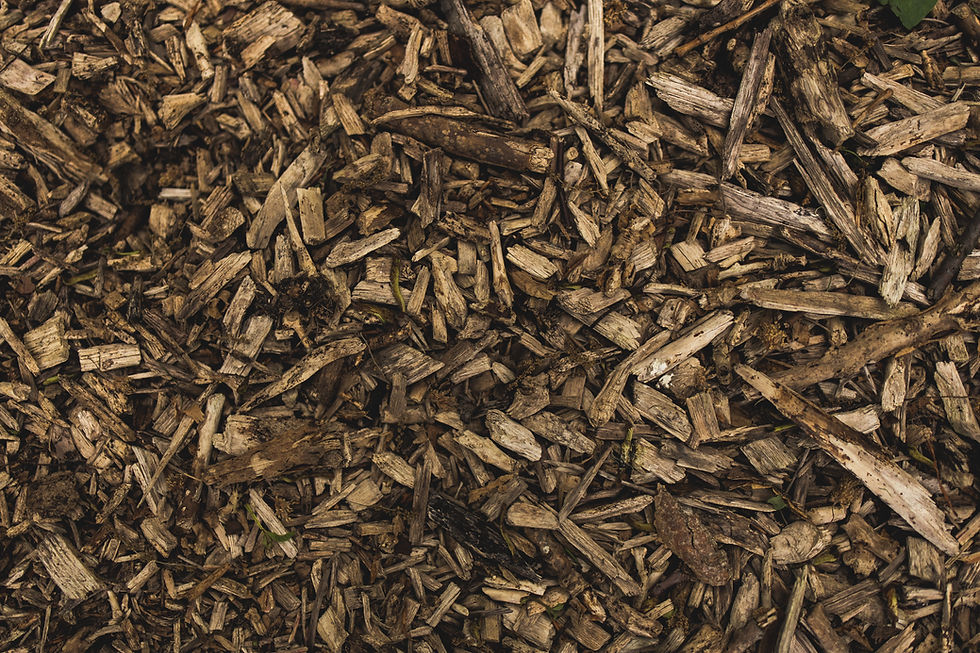As the weather cools, preparing your garden is essential for protecting your plants and setting the stage for a vibrant spring. Taking the time to prepare now not only protects your plants from the cold but also ensures a healthier, more vibrant garden come spring.
Here are some essential steps to help your garden thrive through the colder season and beyond:
1. Mulching for Winter Protection

Mulching is one of the most effective ways to protect your garden from the cooler months. A 2-3 inch layer of mulch helps insulate the soil, retain moisture, and shield plant roots from freezing temperatures. It also helps prevent the freeze-thaw cycle, where fluctuating temperatures cause the ground to expand and contract, potentially damaging plant roots.
Organic mulches like wood chips, straw, or shredded leaves are great options. Not only do they protect your garden, but they also break down over time, adding nutrients to the soil. Avoid piling mulch directly against plant stems, as this can cause rot. Spread it evenly, keeping a small gap around the base of each plant.
2. Pruning: What and When to Trim

Fall is an excellent time for light pruning, especially for removing dead, damaged, or diseased branches. Pruning improves air circulation and reduces the risk of diseases overwintering. However, be cautious not to prune too heavily, especially for plants that bloom on old wood (such as hydrangeas or lilacs). Over-pruning could affect their bloom cycle for the next year.
Focus on cutting back perennials and cleaning up overgrown areas. For shrubs and trees, wait until they are dormant (after leaves fall) for any heavy pruning. Always use clean, sharp tools to make precise cuts that will heal quickly, minimizing the risk of disease.
3. Planting Fall Perennials

Fall is the perfect time to plant hardy perennials. Cooler weather encourages root growth without the stress of summer heat, giving plants a head start before winter. Perennials like mums, asters, and ornamental grasses thrive when planted in the fall. They not only add color to your garden during autumn but will return year after year with proper care.
To plant perennials:
Choose a sunny, well-drained location.
Dig a hole twice as wide as the root ball.
Place the plant in the hole and backfill with soil, ensuring that the crown (where the stems meet the roots) is at soil level.
Water thoroughly and add a layer of mulch for insulation.
These fall-blooming perennials also provide essential late-season nectar for pollinators, which are still active well into autumn.
4. Fertilizing and Composting

Before the ground freezes, enrich your soil with compost or a slow-release organic fertilizer. Adding compost improves soil structure, promotes healthy microbial activity, and provides essential nutrients to your plants. Fall fertilization helps build strong roots and prepares plants for spring growth.
When applying compost:
Spread a 1-2 inch layer of compost over garden beds.
Gently work it into the top few inches of soil with a garden fork.
Water the area to help the nutrients penetrate the soil.
If using a slow-release fertilizer, be mindful of the type of plants you're feeding. Different plants, such as evergreens, shrubs, or lawns, may require specific nutrient compositions. Always follow the package instructions for best results!
5. Protecting Sensitive Plants

Some plants are more sensitive to frost than others, especially tender perennials or young plants. To help them survive, consider using frost blankets or row covers to insulate them. These protective covers help trap heat from the soil and keep the plants warm during cold nights.
For smaller plants, an easy trick is to use overturned buckets or pots to shield them during frost. Just remember to remove the covers during the day so that your plants can get sunlight and fresh air.
If you have potted plants, consider bringing them indoors or moving them to a sheltered location, such as a garage or enclosed porch, to protect them from harsh weather.
6. Watering Before Winter

It might seem counterintuitive, but watering your garden thoroughly before the ground freezes is essential. Well-hydrated plants are more likely to survive cold temperatures. However, be sure to adjust your watering schedule based on weather conditions. As temperatures drop, plants require less water, and overwatering can lead to root rot.
For in-ground plants, water deeply every few days until the first hard frost. For containers, make sure they don’t dry out completely but reduce the frequency of watering to prevent soggy soil.
7. Prepping Raised Beds and Containers

If you garden in raised beds or containers, fall is a great time to refresh the soil. Remove any dead or dying plants and replenish the beds with fresh soil mixed with compost. This will ensure your beds are rich in nutrients and ready for winter crops or spring planting.
If possible, move containers to a sheltered location to prevent soil from freezing solid. If the containers must stay outside, consider wrapping them in burlap or moving them against a wall for extra protection.
8. Cleaning and Storing Garden Tools

Don’t forget about your garden tools! Fall is the perfect time to clean and store them properly, ensuring they’re in good condition when spring rolls around. Clean off any dirt or sap, sharpen blades, and coat metal parts with oil to prevent rusting. Store tools in a dry, sheltered place to avoid damage over the winter.
By following these essential fall gardening tasks—mulching, pruning, planting perennials, and protecting sensitive plants—you’ll be giving your garden the care it needs to thrive through the cooler months. Preparing now ensures that when spring arrives, your plants are ready to burst back to life with vibrant growth and blooms!
Comments